

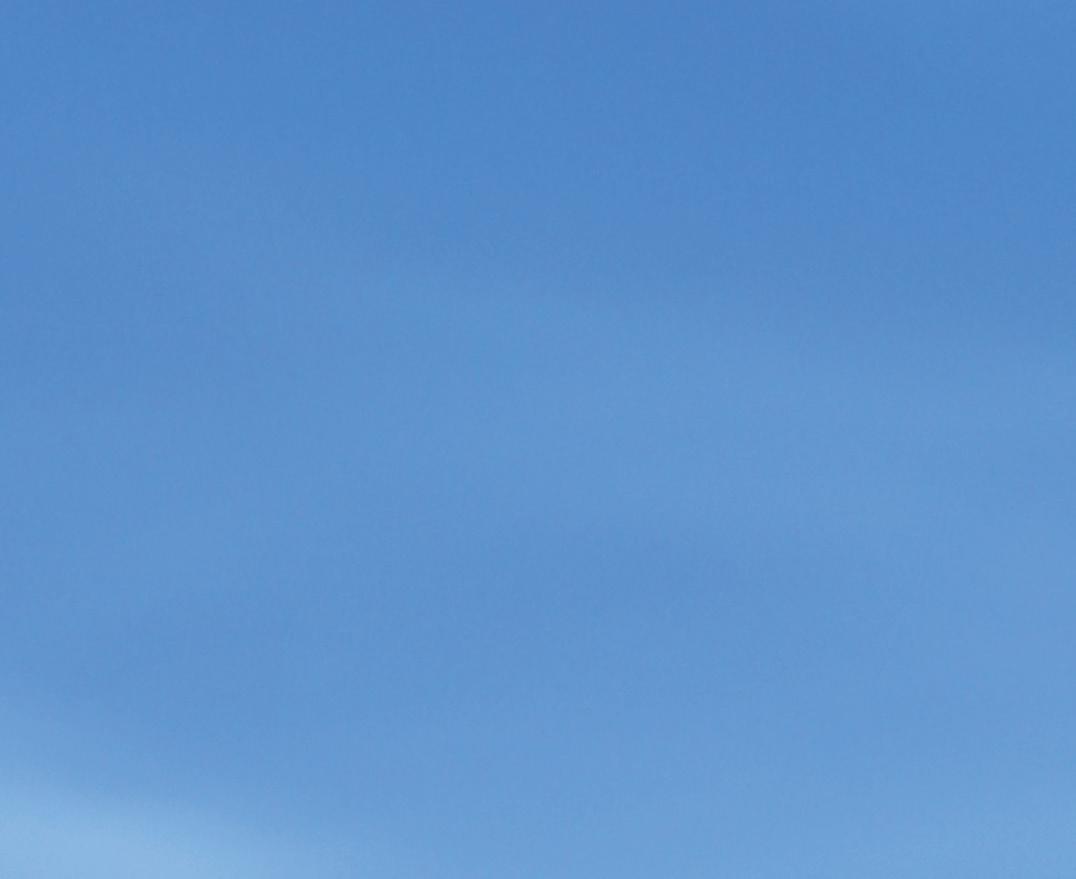


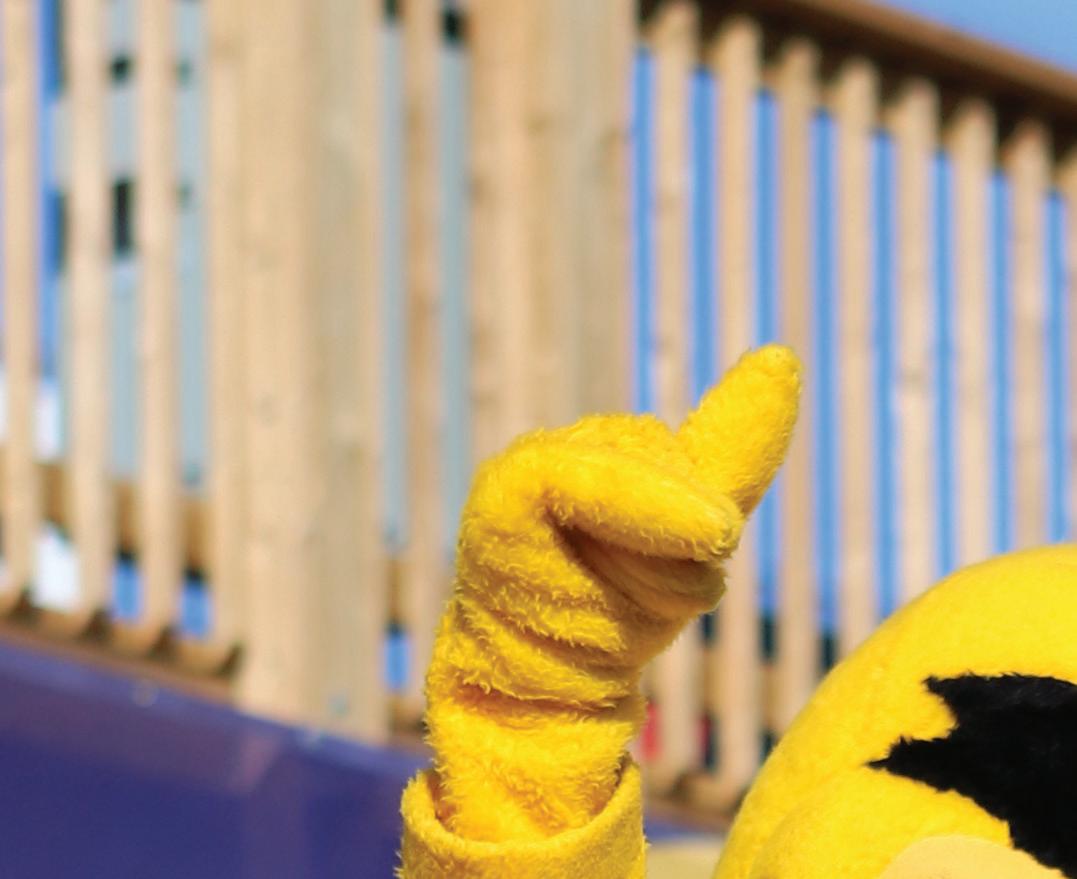



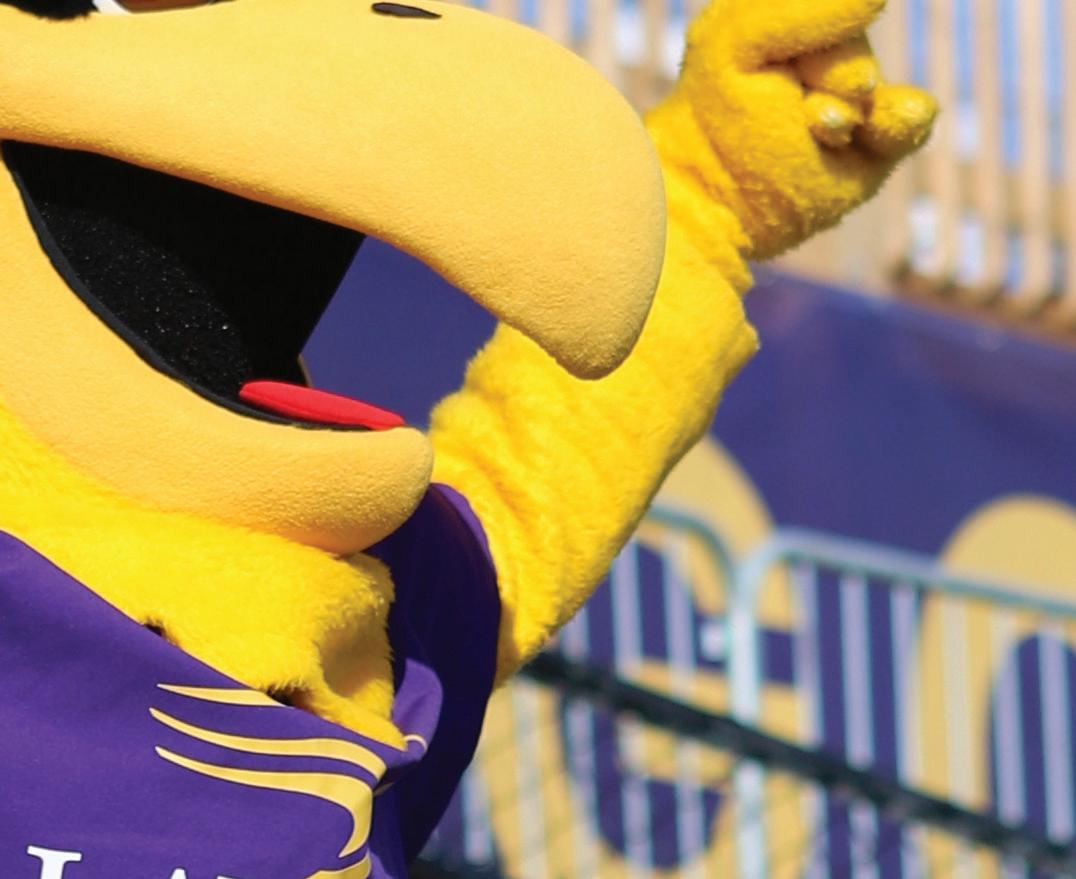





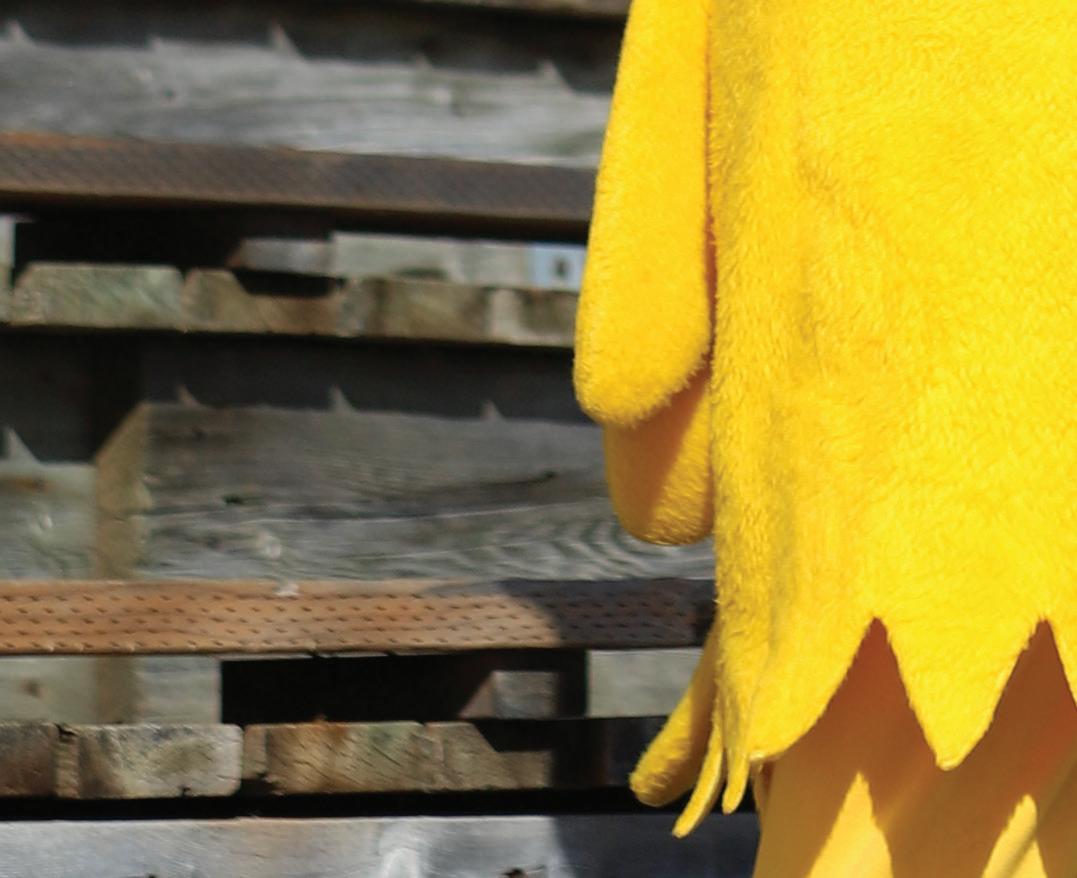





THE CORD
TIE THAT
VOLUME 62 ISSUE 3 • NOVEMBER 3, 2022 CHRISTMAS IS CALLING Looking into new and upcoming markets Arts & Life, page 12 GOLDEN HAWKS SOAR ABOVE Golden Hawks win against the Carleton Ravens Sports, page 16 THRIVE ON CAMPUS Thrive week on the Waterloo campus News, page 4 HOSTILE ARCHITECTURE Exploring hostile architecture in Waterloo Opinion, page 15 NEW MAYOR ELECTED
new
mayor News, page 3
THE
BINDS WILFRID LAURIER UNIVERSITY SINCE 1926
Dorothy McCabe elected as
Waterloo
- Madi Tsoutsoulas, 4th year political science

PHOTO OF THE MONTH

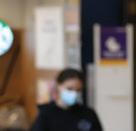



-Elaine Du, 3rd year political science & business Management




- Alexandra Martin, 4th year film studies with a music minor





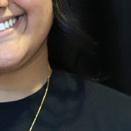








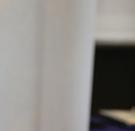

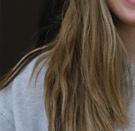






-Harjot Dhamee, 3rd year honours science
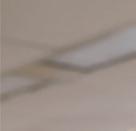


-Mariah Gribowski, 2nd year psychology and neuroscience
the earliest time possible.

PREAMBLE

Ethical journalism requires impartiality, and consequently con icts of interest and the appearance of con icts of interest will be avoided by all sta e only limits of any newspaper are those of the world around it, and so e Cord will attempt to cover its world with a special focus on Wilfrid Laurier University, and the community of Kitchener-Waterloo, and with a special ear to the concerns of the students of Wilfrid Laurier University. Ultimately, e Cord will be bound by neither philosophy nor geography in its mandate.


e Cord has an obligation to foster freedom of the press and freedom of speech. is obligation is best ful lled when debate and dissent are encouraged, both in the internal workings of the paper, and through e Cord’s contact with the student body. e Cord will always attempt to do what is right, with fear of neither repercussions, nor retaliation. e purpose of the student press is to act as an agent of social awareness, and so shall conduct the a airs of our newspaper.

LAND ACKNOWLEDGEMENT
We would like to acknowledge that Wilfrid Laurier University Publications is located on the Haldimand






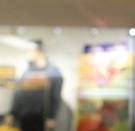








NEXT ISSUE DECEMBER 1, 2022 CORD STAFF EDITOR-IN-CHIEF Yasmeen Almomani editor@thecord.ca MANAGING EDITIOR Brontë Behling managingeditor@thecord.ca MULTIMEDIA DIRECTOR Kash Patel multimedia@thecord.ca NEWS DIRECTOR VACANT news@thecord.ca NEWS EDITOR James Winslow news@thecord.ca ARTS EDITOR Amichai Abraham arts@thecord.ca LIFESTYLE EDITOR Crystal Xue arts@thecord.ca OPINION EDITOR VACANT opinion@thecord.ca SPORTS EDITOR VACANT sports@thecord.ca PHOTO EDITOR VACANT photos@thecord.ca VIDEO EDITOR VACANT video@thecord.ca LEAD REPORTER Ashley Barry news@thecord.ca LEAD PHOTOGRAPHER VACANT photos@thecord.ca LEAD SPORTS REPORTER VACANT sports@thecord.ca CONTRIBUTORS Sadiya Teeple Jack O'Kee e Natasha Giannantonio Emily Anderson Dana Arafa Jessica Wyles EDITOR’S CHOICE “Colleen James elected into regional council” - Ashley Barry ADVERTISING INQUIRIES All advertising inquiries can be directed to Kurtis Rideout at ads@wlusp.com or 519-884-0710 ext. 3560. COLOPHON e Cord is the o cial student newspaper of the Wilfrid Laurier University community. Started in 1926 as the College Cord, e Cord is an editorially independent newspaper published by Wilfrid Laurier University Student Publications, Waterloo, a corporation without share capital. WLUSP is governed by its board of directors. Opinions expressed within e Cord are those of the author and do not necessarily re ect those of the editorial board, e Cord, WLUSP, WLU or Master Web Printing Inc. All content appearing in e Cord bears the copyright expressly of their creator(s) and may not be used without written consent. e Cord is created using Macintosh computers running OS X 12.5 using Adobe Creative Cloud. Canon cameras are used for principal photography. e Cord has been a proud member of the Ontario Press Council since 2006. Any unsatised complaints can be sent to the council at info@ontpress.com. e Cord’s circulation for a normal Wednesday issue is 4,500 copies and enjoys a readership of over 10,000. Cord subscription rates are $20.00 per term for addresses within Canada. e Cord has been a proud member of the Canadian University Press (CUP) since 2004.
Cord will keep faith with its readers by presenting news and expressions of opinions comprehensively, accurately and fairly. e Cord believes in a balanced and impartial presentation of all relevant facts in a news report, and of all substantial opinions in a matter of controversy.
sta of e Cord shall uphold all commonly held ethical conventions of journalism. When an error of omission or of commission has occurred, that error shall be acknowledged promptly. When statements are made that are critical of an individual, or
e
e
we shall give those a ected the opportunity to reply at
an organization,
tract, traditional territory of the Neutral, Anishnaabe and Haudenosaunee peoples. is land is part of the Dish with One Spoon Treaty between the Haudenosaunee and Anishnaabe peoples. We recognize, honour and respect these nations as the traditional stewards of the lands and water on which Student Publications is now present. Cover
Abigail
Quote of the week: “I'm scared of teens judging my co ee order.” - Jackson Wells
photo taken by
Heckbert
2 • THURSDAY, NOVEMBER 3, 2022 @cordnews The Cord @thecord.ca @thecordwlu
VOCAL CORD
WILFRID LAURIER UNIVERSITY ARCHIVES
An article published in the Nov. 3, 1967 issue of The Cord.
FROM THE ARCHIVES
What do you do for self care?
"Exercising and spending time with loved ones."
and economics
"Painting or finding something to create."
"Using cannabis, doing light cleaning around the house, and singning."
"Going to the park with my roomates and playing frisbee."
ABIGAIL HECKBERT/CORD PHOTOGRAPHER
MIDAS IF THE GOLDEN HAWKS HAD LOST THE QUARTERFINAL FOOTBALL GAME
"Listening to music and driving."
NEWS DIRECTOR VACANT news@thecord.ca
NEWS EDITOR JAMES WINSLOW news@thecord.ca
Laurier alumnus elected mayor of Waterloo
reduced or eliminat[ed] fares for some populations, like youth in particular so we can get them in … build those future riders.”
JAMES WINSLOW NEWS EDITOR
e new mayor of Waterloo is a former Golden Hawk.
In a tight race last week, defeating her opposition by just over 300 votes, Laurier alumnus Dorothy McCabe was elected mayor of Waterloo region.

For years, McCabe has worked as a government relations and municipal sector professional,
advising elected o cials at the municipal and provincial levels.
“Now, I’m at the decision-making table, so I’m thrilled,” McCabe said.
One of the rst items on McCabe’s post-inauguration agenda is to use public land around the RIM Park area to build a new a ordable housing development.
McCabe is interested in partnering with a non-pro t developer for the project.
Another top item on her list is to create an advisory council that
CAMPUS NEWS
hears from various community voices.
“Another thing I want to do is set up what I call the Team Waterloo Mayor’s Advisory Council … the idea behind it is to bring stakeholders from every sector in our community together,” McCabe said.
e idea for such a council was borne from a desire to listen to groups who are most knowledgeable about a given topic.
“I don’t want to say that I have the answers. I have some ideas, but
I really want to hear from all these di erent sectors,” McCabe said.
At a higher and more longterm level, McCabe wants to help cultivate eco-friendly politics and practices in the Waterloo region.

“One of the main reasons that I decided to run was regarding climate change. I really think we need to kind of push the agenda on climate change,” McCabe said.
One way she hopes to accomplish this is by exploring modi cations in the transit system.
“I would really like to look at
McCabe said she is excited to nd out the answer to her campaign slogan, ‘what’s next Waterloo?’.
“Really thinking long term, it’s like what can we do? What can Waterloo do? We have so much potential. So that’s really exciting for me,” McCabe said.

McCabe also spoke about what she is fearful of as her inauguration approaches.
“What’s scary for me [is that] we’re still somewhat living through the COVID era,” McCabe said.
“If there’s something like that that’s on the horizon again, that’s something that really worries me.”
McCabe said one of the reasons such a prospect worries her is the struggle that small businesses went through during previous heights of the pandemic.
“I don’t know if they could survive another COVID experience,” McCabe said.
McCabe also has her eyes on issues concerning students in Waterloo. Among these are the need for safer roads, pedestrian outlets around the university district and
unsafe student housing.
“I think that’s something we need to look at: that stretch from King to Westmount and how safe it is there and if there’s something we can do there to make it safer for pedestrians.”
Another transit-oriented goal McCabe wants to pursue as mayor is providing more bus service to alleviate some of the strains on the current system.
e infamous GO line on University Avenue, for instance, in which students sometimes wait for hours, is a symptom of these strains.
“What can we do on that front to see if we can make transit a more e ective and e cient option for students coming in from out of town?” McCabe asked.
In her closing remarks, McCabe spoke on her excitement for her new position and a sense of comfort in her win.
“I’m really excited. It’s still very much setting in … I just feel in my gut that this is where I’m meant to be, so I’m thrilled to be here.”

Islamic Heritage Month and Laurier experts
products.
YASMEEN ALMOMANI EDITOR-IN-CHIEF
e Canadian government named October Islamic Heritage Month in 2007; marking a month of opportunity to learn about Muslims and their traditions, history, and culture, while also recognizing the importance of inclusivity and recognizing the unique challenges of racism and Islamophobia that Muslims face.
To commemorate this month, Laurier has held multiple events across campus. Laurier also posted an expert alert for Islamic heritage month to highlight a list of experts at the institution.
One of the experts, Ali Zaidi, an associate professor in Global Studies and Religion & Culture, has a focus on cultural globalization and Islam and modernity, among other things.
“Cultural globalization refers to the cultural e ects of the integration of the world that we’ve experienced in the mid to late 20th and 21st centuries,” he said. “…It refers to the ways in which cultures move through the world.”
Part of this is integration, but the other part can be resistance expressed against certain cultural
e examples he provided are the globalization of American culture through fast food, movies, TV shows expanding to other parts of the world, or the popularity of falafel and shawarma in North America.
Zaidi also explained how there are certain perceptions of Muslims in the West regarding their dedication to religion.
“ ere’s this perception that Muslims tend to be very religious, more so than other communities and more observant than other communities,” he said. “ at may or may not be true, we need to actually do the research on this.”
Despite these perceptions, Zaidi prefaced a book by Stanley Fischer, that reveals Muslims are not di erent from other communities
“What I think we don’t recognize is the ways in which Muslims are not that distinctive from other communities.”
e book, named Are Muslims Distinctive? Includes results from an international survey that shows Muslims having the same responses regarding multiple factors, such as political a liation. e only distinction is that Muslims tend to be more conservative with respect to sex.
Zaidi continuously researches religion, secularism, and the cultural side of globalization, while also delving into the role of hermeneutics in interpretations of
religious texts.
When discussing Islam or a minority group such as Muslims, the topic of racism (and in this case, Islamophobia), is often brought to the discussion.
Another Laurier expert, Jasmin Zine, is a sociology professor at Laurier with her expertise including Islamic feminism, and contemporary manifestations of Islamophobia.

Zine explained how her most recent book, Under Siege: Islamophobia and the 9/11 Generation examines the ways in which a generation of youth navigated the world at a time when their identities were essentially under siege with the heightened era of Islamophobia in the aftermath of 9/11, the war on terror, and domestic security policies that targeted Muslim communities.
“Muslims were seen through a lot of stereotypes, as potential terrorists, radicals and so on. And that hasn’t changed, since 9/11, those particular stereotypes still exist. It’s easy to equate Islam and Muslims with terrorism as is done in a lot of anti-Muslim propaganda globally, not just in Canada or North America or Europe,” she said.
She is currently exploring the Canadian Islamophobia industry, speci cally looking at networks where Islamophobia becomes orchestrated in some cases through conspiracy theories. is builds on research from the US denoting the
way that Islamophobic bigotry has been monetized.
“It’s a ected [the millennial generation of Muslim youth] in a number of ways, in terms of their sense of identity, belonging, citizenship, the way in which they are being surveilled, and now tend to surveil themselves,” she said.
Looking speci cally at students: on a micro level, there are services that they need on campus as Muslims.
“ ere’s certain services that Muslim students need on campus, and I think that universities are beginning to address that and have been for a while,” Zaidi said. “ is year, will be the rst time in many years when Ramadan will fall during the school year.”
Since Ramadan consists of fasting and eating meals at a certain time of day, Zaidi said that this could a ect students living on residence who would need to take food home from the dining hall.

On a macro level, looking directly at Islamophobia, Zine referenced education as a front for combatting any form of oppression.
Considering the two terror attacks that have happened in Canada, Islamophobia has become deadly and the response to it needs to be appropriate to the danger.
“When it comes to anti-Islamophobia education, there is a responsibility, I think, for all universities to make sure that relevant courses re ect education around Islam and Muslims and around Islamophobia more directly,” she said.
Laurier has several relevant courses, including Zine’s course on religion and global justice, and Zaidi’s courses on religion and global studies, as well as a unique Muslim Studies program at the university.
• 3 THURSDAY, NOVEMBER 3, 2022 News
CONTRIBUTED PHOTO
MARYAM AHRARI/ CORD PHOTOGRAPHY
LOCAL NEWS
Colleen James elected into regional council
ASHLEY BARRY LEAD REPORTER
On Monday, Oct. 24, Colleen James was elected to Regional Council.
In a historical moment, she became not only the first Black woman in the history of Waterloo Region to achieve this position, but also polled more votes than any other candidate running for Regional Council, obtaining 13,519 votes to secure her win.

“That, to me, said a lot. It said that people came out to support me, my leadership and commitment to the region, and that was very humbling. I thought we would do well, but to see that, it just kind of blew me away,” James said.
James was born and raised in Kitchener/Waterloo and began volunteering in the community at an early age. Her continuous community involvement was one of the factors that inspired her to run in this election.
“I was there as a teenager volunteering, so being involved in the community has always been something that is part of who I am. Now, the region and the cities have been calling for change in the ways decisions are being made. I just thought to myself, you know, if I don’t do this, I’m going to regret it,” she said.
It is a crucial time to invite positive change into the region as we have endured two years of uncertainty and unprecedented times with COVID-19. Cost of living
has also become a serious hurdle for many, especially concerning housing.
“I got from the student perspective that finding a place to live and working to afford places to live is not easy. It’s never been easy, but right now, young people shouldn’t have that much pressure on them when they’re just trying to get through school,” she said.
Recognizing these issues is important when it comes to implementing decisions that can lead to change for the better of the community, but can prove challenging when disrupting things that have been in place for a long time, much like the challenges James faced on her campaign journey.
“Being a woman and being a
Black woman who is running, there are things that I had to be very conscious of. I couldn’t go canvassing by myself, especially when it was getting dark outside, and we did face racism and discrimination at the door in various forms. We had to make some calls as a diverse team, in certain areas, and say we’re not going because I didn’t want to subject people volunteering to what was being said, and, you know, that that was the reality,” James said.
Although there were some members in the community that did not support James’ campaign, there was a community that became involved and supportive of the campaign.
“The ability for me to connect
with people at the door really created that change in momentum. Aside from the bias, discrimination and some of the racism that was there, there was also people who were supportive at the door, and I was giving them some hope,” she said.
Two weeks from election day, James felt something big was happening.
“When people opened the door, their families would start cheering, and say, “you’re here!” I would be walking down the street, and people would honk or say they’re rooting for me, so support came from all aspects, and knocking on doors is the best way you will find out what people feel and think and what we can do better,” James said.
As Regional Council is responsible for expensive municipal services, such as sewage and water treatment, main roads, police, paramedics, public transit and garbage collection, James will be influencing the big long-term decisions and planning in the area.
“The key things that came up were housing, affordable homes and building homes, and for students, thinking about some of the services you may be accessing, you know, making sure that there are regional programs that are available for students,” she said.
Within making decisions and plans surrounding these services, James also strives for connecting with the large student population in the community.
“I’m about collaborating, networking, building relationships, and working more with student groups at the universities or the colleges because I think in order to
build and grow this region, they’re a vital part of this conversation, and I don’t think that happens enough, and that’s why, you know, people say ‘well, I don’t know what the region does’, it’s because we haven’t done enough work,” James said.
Along with making an effort to include students in the conversation about issues in the region, James is pushing for social change by aiming to redesign how the region does things.
“I hope to address some of those political and social disparities that I see now by firstly building trusted relationships, making sure I continue to have equity-informed discussions and speaking to those whose voices haven’t been amplified before,” she said.
Creating change involves listening and collaborating with the community, supporting groups, organizations and individuals who are working to fix social and political inequality issues.
“I think that’s how you get to some of that meaningful change, because you’re going through a process where you’re inviting people in, and you’re having more conversations,” James said.
Another important factor is the council working together.
“Political and social change is going to come from redesigning how we do things––the models that have been used before don’t work anymore,” she said.
Laurier holds Thrive Week with campus and online
MADALYN MOSTACCI NEWS INTERN

This past week, the Laurier Wellness Centre hosted Thrive Week.

Thrive Week has been adopted by many post-secondary institutions across Ontario with the aim of strengthening mental health on campuses.
“I think it’s really important to do something good for your body and for your mind or whatever type of wellness you feel like [is] helping, I think that’s a priority …”
Kayla Rischke, a third-year business administration student and peer wellness educator with the Laurier Wellness Centre, said.
Initiatives surrounding mental wellbeing for student bodies are greatly needed.
According to Ontario’s Universities, “The number of students on college and university campuses with identified mental health disabilities has more than doubled over the past five years.”
“There is definitely a heavy focus on the mental health of university students because there is a lot of pressure on us often…,” Rischke said.
Thrive officially came to Laurier in 2017 and now runs every Fall and Winter term.
“I think each year we’ll start gaining more traction and more people will know [Thrive] is going on,” Rischke said.
In-person events were held on the Waterloo and Brantford campuses for this semester’s Thrive Week, with online and asynchronous options available for accessibility.
All of these events were aimed the seven dimensions of wellbeing.
“Whenever we’re planning events with the Wellness Education team … we like to take into consideration all the seven dimensions of wellness; mental, physical, social, financial, spiritual, environmental and vocational … we try and combine at least two or more,” Rischke added.
Athletic classes were hosted by Laurier Recreation throughout the week.
Students were able to drop in on a variety of activities including yoga, rock climbing and glow-inthe-dark cycle fit.
Thrive also provided many food related events.
Waterloo students were able to
enjoy a free pancake breakfast and a make-your-own trail mix booth.
In addition, there was a food justice campus tour that informed participants on food sustainability at Laurier.
One of the featured events during Thrive week is Fresh Fruit Friday, which also happens weekly on campus.
“It’s held on the occasional Friday and we hand out fresh fruit to students. This helps us promote physical wellness by improving nutrition,” Rischke said.
Mental health was addressed through seminars, guest speakers and group initiatives. Workshops on self-care, mindfulness and coping with anxiety were held online, as well as an intro-level suicide intervention workshop.
“I think it’s really beneficial for students to know what to do if they’re in a situation where they know someone or have a friend who is feeling suicidal, or maybe they don’t know that they’re feeling suicidal, but they can look for those clues and know how to help,” Rischke said.
Haley Perlus, the Fall 2022 Thrive keynote speaker, gave an online lecture regarding mental strength.
This gave insight on how to deal with unexpected, unnecessary and uncontrollable stress.
As a final take away from Thrive, Rischke added, “I think one thing I would really like students to know … is the importance of taking time out of your day to do something that helps with your wellness and not completely prioritising school
… your wellness is more important.”
ness@wlu.ca and any feedback surrounding mental health can be submitted through the online mental health suggestion box.
4 • NEWS THURSDAY, NOVEMBER 3, 2022 LOCAL NEWS
THRIVE WEEK
CONTRIBUTED PHOTO
The Laurier Student Wellness Centre can be reached at well-
SADIYA TEEPLE /CORD PHOTOGRAPHY
Laurier scientist leads fight against cancer
LAURA KAPRIELIAN NEWS INTERN
Wilfrid Laurier University virologist and immunologist Stephanie DeWitte-Orr has made a significant discovery with the potential to revolutionize the method by which scientists search for and eliminate genes that cause cancer and viruses.
This new therapeutic technology is promising for the treatment or prevention of a wide variety of diseases and conditions including cancer, back pain and viruses like COVID-19.
Long dsRNA, also known as double-stranded ribonucleic acid, is the target of the research project’s attention.
When a healthy cell detects that it may have been infected by a virus, it will use dsRNA to help defend the body.
An infected cell will “put many different sequences in it, and those sequences can match protein sequences, so what happens is that we can control what proteins the cell stops making dependent on what sequences we put in our double stranded RNA,” DeWitte-Orr said.
“For a lot of these diseases, the cell is making too much of a protein. With this technology, we can
CAMPUS NEWS
make the cell turn off just those proteins from being made.
“Whatever sequence we put in our molecule can turn off whatever proteins in the cell which we would want to turn off ...Because we have such a long molecule we can put lots of different sequences in it so we can turn off more than one protein at the same time,” DeWitte-Orr said.
“Most of what we do with it is to activate [an] antiviral response called the Type I interferons (IFN-I), [which] stops viruses – but it does care what is in the sequence of the dsRNA just whether the dsRNA is there.”
This sparked the debate over whether or not order is important.
“It turns out that it does, and that we can regulate this sequence in addition to controlling what proteins the cell makes,” DeWitte-Orr said.
DeWitte-Orr discovered that a molecule also has a sequence, not that it is just dsRNA.
“This sequence matters, and we can control this sequence, and control what proteins the cell makes.”
“This is a platform technology which means this research could be imputed into so many different ways. You could put whatever sequence you want in the dsRNA. So
that really opens up its application to pretty much any disease where the cell is making too much of something, this technology could help,” DeWitte-Orr said
This technology is in its early stages. The investigation into the discovery has not yet begun in its pre-clinical phase.
This therapy can be given in the form of an inhaler, and has shown to be useful for combating SARS-COV-2, the virus that causes COVID-19.
According to DeWitte-Orr, it
could take anywhere from five to fifteen years for the treatment to become commercially available.
She recently applied for funding to conduct preclinical trials of the dsRNA technique on humans, which has only been viable in test tubes thus far.


Preclinical experiments with SARS-CoV-2 are the next logical step before human testing may begin. If that goes well, she’ll go on to human testing, which might take quite some time.
As for the future, they are “look-
ing towards other viral diseases working on reducing influenza with this technology,” DeWitte-Orr said.
In addition, DeWitte-Orr hopes to launch pre-clinical trials evaluating the potential of their product to treat malignant tumors and lower back discomfort within the next year.
Exploring discrimination against LGBTQ+ students
per cent, and trans women at16.4 percent.
ASHLEY BARRY LEAD REPORTER
A new study at Wilfrid Laurier University has found that discrimination against the 2SLGBTQ+ community likely leads to mental health and academic struggles for university students who identify as 2SLGBTQ+.
Thriving On Campus is the first study of its kind to interview and survey nearly 4,000 students from universities across Ontario, gathering the experiences, perceptions, wellbeing and academic success of students part of the 2SLGBTQ+ community.
The study also highlights the experiences of students who identify as 2SLGBTQ+ that are Disabled, Indigenous and BIPOC who are minority groups within the 2SLGBTQ+ community.
“This study is important because we need to have the information in order to know where we need to be putting our energies in terms of change,” Michael Woodford, a professor at the Faculty of Social Work said.
Woodford led the Thriving On Campus study and specializes in research about inclusion and exclusion of queer and trans individuals and how it affects their mental health.
“Part of the work that my team and I do around discrimination looks at microaggressions, which
are everyday forms of discrimination that are subtle and are often unintentional, but it’s really important that we understand what their consequences are,” he said.
The report presents a vital source of information of the victimization of 2SLGBTQ+ identifying individuals and the microaggressions they experience on campus, including using incorrect pronouns, forms of documentation asking about gender and sex, receiving information about sexual health that is limited to cisgender bodies, non-accessible bathrooms, implying sex at birth is one’s real gender and negative messages or posts on social media.

“We have examples from students of where they’ve asked for particular pronouns to be used, and faculty have refused to do that,
SADIYA TEEPLE/ CORD PHOTOGRAPHY
and then these students ask themselves, ‘is this really a space where I belong if my identities are not being respected?’” Woodford said.
Microaggressions are not the only form of discrimination 2SLGBTQ+ individuals face on campus, as the study reveals students reported being followed in a threatening manner, sexual harassment and verbal threats of bullying.
According to the report, nearly 12 per cent of participants in the study have been followed in a threatening manner, the highest rates being among students who are nonbinary at 19 percent and cisgender women at 17.1 percent.
For reported sexual harassment, cisgender women made up 22.7 percent of incidents, followed by nonbinary individuals at 17.7
Additionally, the statistics for verbal threats show highest rates among trans men (27.8 percent), trans women (25 percent) and nonbinary individuals (23.4 percent).
These findings of discrimination and assault towards 2SLGBTQ+ have correlated to a decrease in positive mental health and difficulties with academic performance.
“If you think about the stress that goes into being an outsider on a campus––the feeling like you don’t belong, it takes a toll on people’s mental health and how you feel about yourself,” Woodford said.
When students do not feel safe to be themselves in an academic environment, they are likely to stop attending class.
“We found that across all forms of exclusion or discrimination that students who report higher levels of microaggressions tend to report lower levels of positive mental health and academic disengagement. If you don’t feel safe in class, you’re probably not going to those classes,” he said.
In some cases, high rates of victimization will lead students to consider leaving the university.
“The stressors students are under because the climate is hostile, unfriendly, and violent has consequences where students feel they need to leave the school to start all over again somewhere else,” Woodford said.
Although these accounts of students’ experiences with microaggressions are disheartening, this information is crucial towards
creating an environment that is safe and promoting equality on campus.
“Universities have a responsibility to change the environment, and that’s why the campus climate programming that we do is really important, so we can ensure that we are really trying to work on eliminating microaggressions on a campus,” he said.
In recent years at WLU, the university has taken steps towards making campus an inclusive environment for 2SLGBTQ+ by introducing gender inclusive housing, accessible bathrooms, human resources partnering with the sexual violence and prevention support office, and the Rainbow Center.
However, there is room for improvement at WLU and universities across Ontario.
“We are really committed to trying to make change, and have been busy with another project that’s a follow up to the Thriving On Campus study where we’re mobilizing the findings, and helping campuses plan ways to make improvements,” Woodford said.
Woodford and his team continue to host webinars and virtual events to help participants learn, reflect and take action towards establishing a safer and more accepting campus environment.
You can find webinar recordings and information on the Thriving On Campus website: lgbtq2sthrivingoncampus.ca
NEWS • 5 THURSDAY, NOVEMBER 3, 2022 IMMUNOLOGY
CONTRIBUTED IMAGE
AUTUMN LEAVES
KINGSTON // FAYE WEBSTER
COMPENSATING // ANIMÉ, YOUNG THUG
COME HOME // ANDERSON .PAAK, ANDRÉ 3000
BREATHLESS ON DVD // ANTARCTIGO VESPUCCI
NO. 1 PARTY ANTHEM // ARCTIC MONKEYS
HANG LOOSE // ALABAMA SHAKES
I GOT YOU BABE // BAHAMAS
SCENES FROM AN ITALIAN RESTAURANT // BILLY JOEL
CHAOS SPACE MARINE // BLACK COUNTRY, NEW ROAD
CERTAINTY // BIG THIEF
ME AND YOUR MAMA // CHILDISH GAMBINO
R U STILL THERE? // CHRIS FARREN


DON’T THINK TWICE, IT’S ALRIGHT // BOB DYLAN
EVERYBODY WANTS TO LOVE YOU // JAPANESE BREAKFAST

THE GIRL // CITY AND COLOUR
OPHELIA // THE LUMINEERS
AND IT SPREAD // THE AVETT BROTHERS
BIG YELLOW TAXI // JONI MITCHELL
I DID SOMETHING WEIRD LAST NIGHT // JEFF ROSENSTOCK

RIP YOUNG // ISAIAH RASHAD
ARSONIST’S LULLABYE // HOZIER
FINDING MY WAY HOME // FAR CASPIAN
Sudoku





6 • GAMES WEDNESDAY, NOVEMBER 2, 2022
A CORD AND RADIO LAURIER PLAYLIST
Dear Life
Dear Life is your opportunity to write a letter to your life, allowing you to vent your anger with life’s little frustrations in a completely public forum.
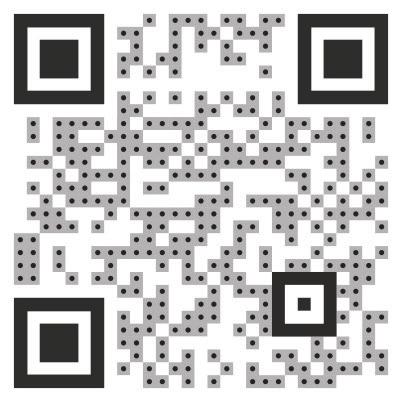


All submissions to Dear Life are anonymous, should be no longer than 100 words and must be addressed to your life. Submissions can be sent to dearlife@thecord. ca no later than Monday at noon each week.



Dear Life, What’s the deal with group work? Why do I have to put my grades in the hands of people who for whatever reason never seem to be available or want to do any work? Every single time it happens I end up doing everything myself last minute. Please profs, make it stop.


Sincerely, e weight carrier
Dear Second Cup in the Library, I miss you so dearly, Please come back to me. Your delicious treats and soothing drinks Got me through many an exam season. And to the kind Second Cup sta , Who made me feel so welcome -- I think I miss you most of all.
Sincerely, Underca einated
Dear Starbucks on campus, Why is your line always so long? Sincerely, Unca einated
Dear Life, WHY IS THE SUN ALREADY SETTING EARLY?
Sincerely, Certi ed Autumn Hater
GAMES • 7 WEDNESDAY, NOVEMBER 2, 2022
Maze Name: _________________________________________________ Word Search B W S M P S C R U H D L E A V E S M Z M E J A R P A I N S T A G R A M Z P U M F X R O I H T F H M C M L X V O S I P O G K T R A Y A A A S G B O E I D M L O N E E I L R U J Y V I T T C A O A A T D T S T L J T D O Q I R X S V R S Y B G B T U O S U A R N Y X U I R H P L A S C R A W D M E G Z B G E Z O L D I L U U W L E X N S W F Y I I E W V W S L W E X I E K J M I R Y L S L M Y O T W S S K T N Q A Y N Q F Y V J V H G M R C A S Y G Find the following words in the puzzle. Words are hidden and AUTUMN FOOTBALL HALLOWEEN INSTAGRAM LEAVES MARKET MAYOR MIDAS MOVIE MUSIC PLAYLIST POETRY PROTEST SHOES SPIRITUALITY VOTING Created using Word Search Generator on Super Teacher Worksheets (www.superteacherworksheets.com)
Search VOLUNTEER WITH US COME your voice, your media
Word



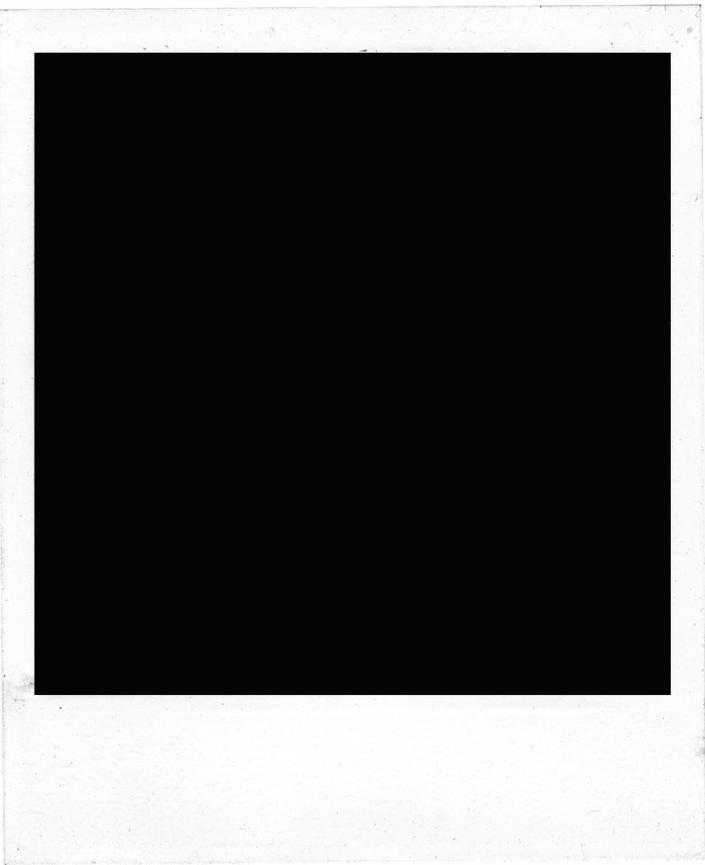





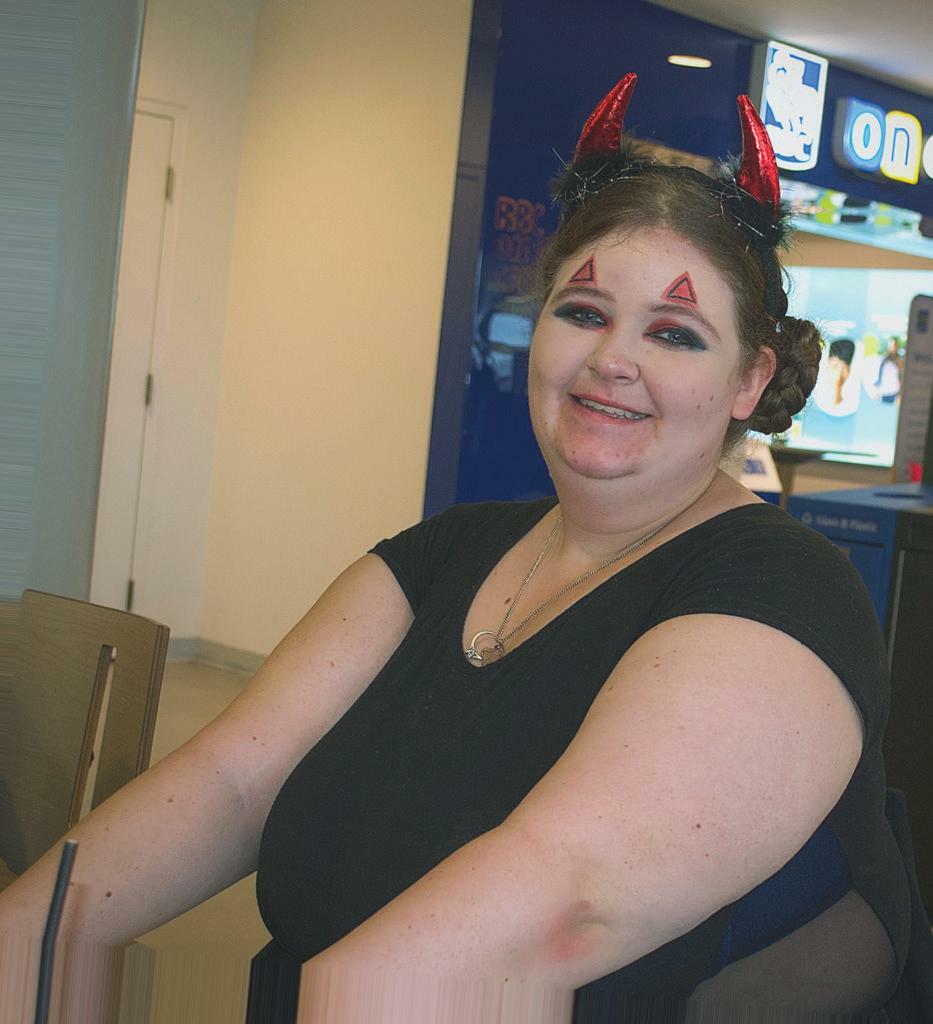









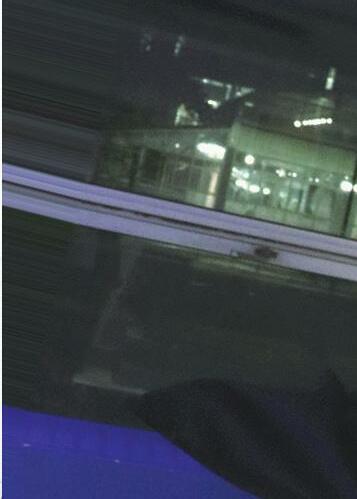
































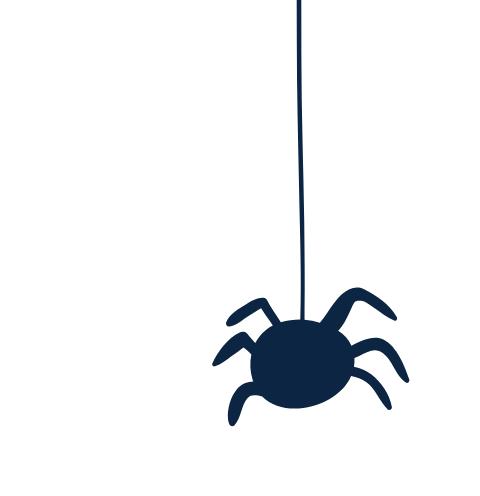
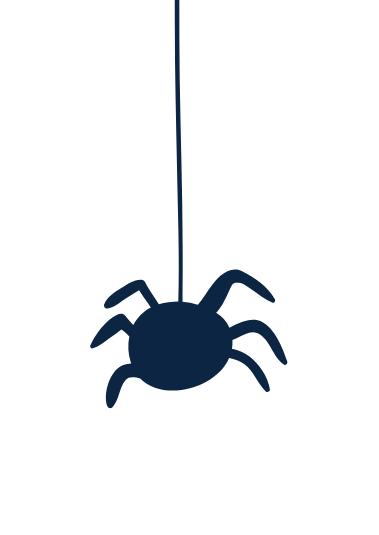
Ad�m S�n�l��s i�v�d� c��pus da�ci�g w�th p��gu o� c��pus OH DEER! Jus� c��w�i�g ���u�d Y�ur f���n�ly WLU Sp�d�r�a� WILF� c�s�um� co�t�s� ! Mi�k a�d c��k��s a ��ttle d�v���s� Halloween costumes on Waterloo campus 2022! Photography by Sadiya Teeple and Maryam Ahrari, layout by Abigail Heckbert
Arts & Life
ARTS EDITOR AMICHAI ABRAHAM arts@thecord.ca
 LIFESTYLE EDITOR CRYSTAL XUE lifestyle@thecord.ca
LIFESTYLE EDITOR CRYSTAL XUE lifestyle@thecord.ca
Is there a justification for Just Stop Oil?
AMICHAI ABRAHAM ARTS EDITOR
e Just Stop Oil movement has recently been making waves in Europe, garnering worldwide media coverage. According to their website, their goal is ‘to ensure that the government commits to ending all new licenses and consents for the exploration, development, and production of fossil fuels in the UK.’ Many would call this a noble goal; however, Just Stop Oil and similar groups have been trying to achieve this through controversial means.
e group has protested fossil fuels by blocking o roadways and spraying buildings associated with fossil fuels with orange paint. However, the protestor’s vandalism of valuable artworks has gotten the most attention from the media and the public. I interviewed University of Waterloo professor and art historian Bojana Videkanic about her thoughts on the art vandalism protests.
Perhaps the most cited instance of such protest occurred on Oct. 14 at the National Gallery in London. Two protestors, Phoebe Plummer and Anna Hollabd, threw tomato
POETRY
soup on the fourth version of Van Gogh’s Sun owers before gluing themselves to the wall next to the painting. ey then expressed the purpose of their action and the message they were trying to send.

e painting itself wasn’t damaged as plexiglass protected it.
“ e social media and the news articles tended to foreground the act itself,” Videkanic said, “but they really didn’t show or talk about what [the protestors] were actually saying.” is is not only the case
with Sun owers but also with many other famous and expensive works of art. e vandalism seems to be the primary focus of the public, leaving its actual purpose to the wayside.
With Sun owers, the protestors were making a point about the correlation between the cost of living crisis and the oil crisis. e soup was thrown at the painting because, as the protestors explain, many families can’t a ord to heat a can of soup.
Videkanic pointed out the neglected question, “Who owns these paintings?” going on to say, “Even though some of these institutions are “public,” they really aren’t as public as we would like to think [they are].” Art is supposed to be a public good that gives value to society. is isn’t the case, at least not currently. Fees are required for most art museums, an expense that many cannot a ord to pay.
Videkanic also mentioned the types of people with prestigious positions on art museum boards, “Most of the people who are emotionally, nancially and educationally invested in these institutions are also invested in extractive industries.” e individuals being ‘targeted’ by these protests are those who are perhaps most responsible for the current cost of living and climate crisis.
While she sympathizes with the young protestors’ message and their willingness to act, Videkanic ultimately deems the protest unsuccessful. By creating sensationalism through demonstration, they only draw more attention away from their cause.
Still, the protestors are asking an important question that should be discussed. After vandalizing Sun owers and gluing themselves to the wall, one of the protestors aloud, “What is worth more? Art or life?” Do we have an answer?
The evolution of poetry and Instagram
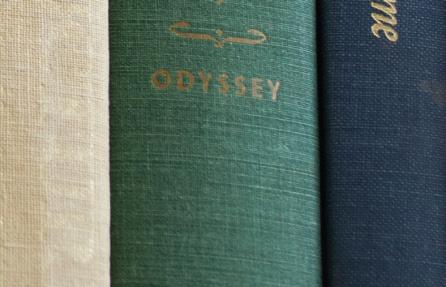



 JESSICA WYLES ARTS CONTRIBUTOR
JESSICA WYLES ARTS CONTRIBUTOR
Poetry is an art form that has evolved over millennia and has been a cultural cornerstone of many civilizations. Whether it’s William Shakespeare and the sonnet, or Rupi Kaur and ‘Instagram Poetry,’ literature is subject to change. It seems that in the modern age, the types of poetry written have radically changed and social media has had a major in uence on the modern evolution of poetry.
Professor, writer, and poet Tanis MacDonald said that the signicance of poetry is the same as it was years ago.


“We’re still writing about what we want and wish, our important questions, about love and death, ideas we haven’t solved yet,” she said.
“[Poetry] reminds us that the privilege of reading means something.”


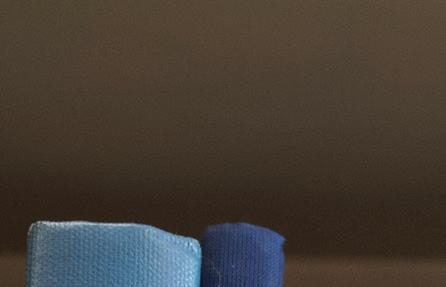
She emphasized the importance of language in poetry and the use of small spaces to support the intensity behind words.


Instagram poetry, a short form of poetry that’s developed within the last few years, has been met with con icting views in the literary world. MacDonald believes that
criticism around Instagram poetry has been too harsh. “Instagram does all kinds of things, but if it introduces people to poetry, I don’t see anything wrong with that,” she said. “[a] perk of Instagram supporting poetry [is that it] gets more people reading.”
“People take stabs at poetry because they’re either gatekeepers, don’t want others to write poetry, or don’t like poetry,” Macdonald explained.
Although poetry has become intellectualized, MacDonald believes that poetry should be “an accessible experience” and recognized the popularity of Instagram’s attainable poetry.

e popularity of Instagram poetry was sparked by now-prominent Instagram poet, Rupi Kaur, with her collection Milk and Honey. Kaur has been a preeminent force ever since, and MacDonald recognized that Kaur has in uenced more than just poetry.
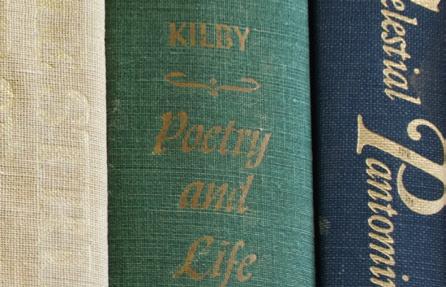
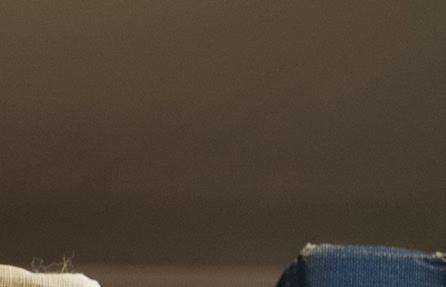
“When her rst success hit she didn’t t into a category. She’s a woman of South Asian Canadian descent, there wasn’t room for her in Canadian Literature. She made space for herself, got a following, and Instagram is good for that.”
Kaur crafting that space also made room for more female poets,
especially among people of colour. Kaur’s success inspired more people to share their voices through a new medium. Recently Kaur released Healing rough Words, a book of prompts. “I think books that o er instructional prompts remind people poetry is available to
them,” MacDonald said. “Prompts remind us of our creativity.”
As poetry changes, Instagram has shifted towards accessibility, encouraging more people to be open to intense forms of expression. Poetic evolution continues to show us the power of language,
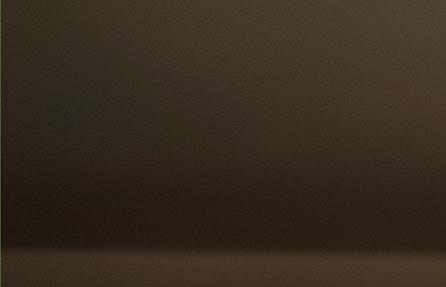
10 • THURSDAY, NOVEMBER 3, 2022
ACTIVISM
CONTRIBUTED PHOTO
and Instagram poetry is just the newest stage. e use of social media to promote poetry may be criticized, but, like any art form, poetry is and should be allowed to evolve.
MARYAM AHRARI/CORD PHOTOGRAPHY
Are you more con- cerned about the protection of a paint- ing or the protection of our planet people?!”and
-Phoebe Plummer, climate activist
Wild Writers Kitchener-Waterloo festival
is] reconnecting with the [Waterloo] community in person… that also includes students and all of the readers and writers locally.”

 AMICHAI ABRAHAM ARTS EDITOR
AMICHAI ABRAHAM ARTS EDITOR

From Oct. 28-30 the Wild Writers Literary Festival returned for another year of connecting Canadian writers and authors of all backgrounds and levels of experience. The annual event is hosted by The New Quarterly literary magazine.


2022 not only marked the 11th anniversary of the festival, but also a return to in person festivities.
I was fortunate enough to attend the main day of the festival and attend some wonderfully informative classes and presentations. Prior to the festival I talked to Eleni Zaptses who is the festival manager and the managing editor of The New Quarterly.
The festival took place at Balsillie School of International Affairs and featured dozens of professional writers, including a couple Pulitzer prize winners. I asked Eleni what the main goal of the festival was, “Since we’re returning in person for the first time [the goal
The festival garnered a strong turn out, however, what I found more profound was the desire of the festival goers to learn as much as they could from the experience.
I asked Eleni if the festival expected attendees to be of a prevailing skill level. “There’s no prerequisites and that’s the interesting thing about the festival,” she told me. While experienced writers are welcomed, so too are amateurs. “You don’t have to be a professional.”
I was present at Luke Hathaway’s workshop The Poem as Mask.
As someone who dabbles in poetry, I found Luke’s ideas particularly refreshing. It gave me a different perspective on poetry and a desire to experiment a bit more next time I had the chance.
I also sat in for a panel featuring Heather O’Neill, Carrie Snyder, and Tasneem Jamal giving tips about editing. These experienced professionals have unique insight when it comes to editing; their different experiences granted valuable advice to all aspiring writers in attendance.
I found everyone at the festival
to be very friendly and excited to be attending. The speakers themselves were polite and genuinely concerned with helping more Canadian writers become successful. There was a positive atmosphere that permeated throughout the day making the day a breezy and
enjoyable experience.
I asked Eleni if we could expect another Wild Writers Literary festival in 2023. “That’s the plan! This is our 11th year and we’re continuing to plan full steam ahead for 2023.”
She explained that for the organiz-
ers, there was a big learning curve when it came to readjusting to in person. However, she expressed optimism in how the foundation that was laid this year would benefit the 12th annual festival in 2023.
The fog clears: Rust resumes shooting
JACK O’KEEFE ARTS CONTRIBUTER
In a small church, notorious outlaw Harland Rust, along with his 13-year-old grandson, are surrounded by U.S. Marshall Wood Helm and bounty hunter Fenton “Preacher” Lang.
Finally closing in on the two, Harland’s grandson, Lucas, is to be hanged for the accidental murder of a local rancher, Rust: for freeing Lucas from death row.
Surrounded on every side, the outlaw decides the only way out is through a classical western shootout. Armed with his .45 Long Colt revolver, Rust cross-draws his revolver and cocks it.
It is said to be a “cold gun” by assistant director Dave Halls (meaning the gun had been checked to contain no live ammunition). Unfortunately, when it was fired, it killed cinematographer Halyna Hutchins.
How the gun contained live ammo still remains a mystery with those involved blaming one another over the past year.
Matthew was quick to place blame on Baldwin stating, “[Bald-
win] recklessly shot and killed Halyna Hutchins on the set.” In response, Baldwin filed an arbitration demand stating he should take no financial losses over Halyna’s death.
After the fatal shooting, production was halted. Baldwin announced that he sincerely doubted Rust would ever begin filming
again.
However, according to a statement by Matthew on Oct. 5, Rust will resume filming in January of 2023, with Matthew Hutchins acting as executive producer.
Matthew’s statement mentioned that the case against Baldwin for the wrongful death of Halyna would be dismissed and all original
‘key players’ from the production of Rust will remain on board. Withdrawing blame from Baldwin, Hutchins’ statement acknowledged that “Halyna’s death was a terrible accident.”
Baldwin’s attorney has said that “throughout this difficult process, everyone has maintained the specific desire to do what is best for Halyna’s son.”
Before the tragic accident, Rust was being shot at the infamous Bonanza Creek Ranch where films such as the Coen Brother’s Ballad of Buster Scruggs (2018) and Dennis Hopper’s Easy Rider (1969) were filmed.
With the resumption of filming, the production will be moved out of New Mexico, suspected to resume in California.
The cinematographer taking Halyna’s’ position is still unannounced, yet there will always be a safety officer on set.
Although the production is moving out of New Mexico, the homicide investigation enacted by the Santa Fe County Sheriff’s Office will carry on.

ARTS & LIFE • 11 THURSDAY, NOVEMBER 3, 2022 FESTIVALS
AMICHAI ABRAHAM/ ARTS EDITOR
CONTRIBUTED PHOTO
Matthew Hutchins, husband of Halyna Hutchins, filed a wrongful death lawsuit against Alec Baldwin and the production of Rust in February, claiming that “aggressive cost-cutting practices” during the Rust production that endangered the safety of anyone on set.
Don’t be caught unprepared. sign up for the wlusp newsletter for updates & info.
FILM
Midnights: Swi ’s starry new music era
is album, Swift’s 10th since 2006, falls under the pop and alternative genre.

It’s been nearly two years since Taylor Swift released Evermore, and fans eagerly awaited the drop of her newest album Midnights this past weekend.

With such a unique collection of music, I use no exaggeration when I say that we’re entering a new era of Swift.
Swift has classi ed this album as 13 sleepless nights scattered throughout her life. ese new songs indulge fans in an album that refuses to stay silent about struggles of fame, love and insecurity.
ough I am a big ‘Swifty’, for some reason this has not been one of my favourite albums of hers.

Sure, I still listened to it on repeat, but a part of me is somewhat unimpressed and underwhelmed by how only a few songs compare to her older albums.
Swift’s old songs such as those from her albums Red, Lover and Fearless were much catchier, upbeat and fun.
is album was amazing nonetheless, but I found the songs to be lacking a certain “dance party in the kitchen with your friends” type of vibe I feel her other albums provided.
is is a shift from the musical genre she used to create when her career started.
Regardless of song or style, Swift has been one of the highest-selling artists for over a decade.
Midnights has managed to break records and make history, being streamed over 72.5 million times in this past week alone.
On the day of its release, Midnights broke Spotify’s global records for the highest amount of streams in one day.

Not only is this an amazing achievement for Swift, but this surpasses the number of streams her previously bestselling album, 1989, hit.
is goes to show that she continues to reach new heights of stardom while improving her abilities each time.
I nd that Swift’s most notable songs from Midnights are Karma, Midnight Rain, Mastermind and Vigilante Shit.

ese are the songs that I found myself to be listening to the most.
Karma and Vigilante Shit remind me of songs from Swift’s Reputation album because of their similar beats and music style, while Midnight Rain and Mastermind give
the album a di erent feel.
Fan favourites from the album also include Anti-Hero, Lavender Haze and Maroon.




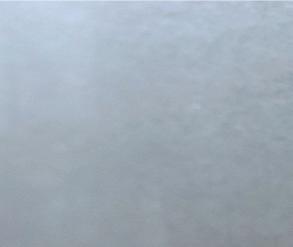
All have gained popularity as sounds on TikTok, along with the aforementioned favourites.
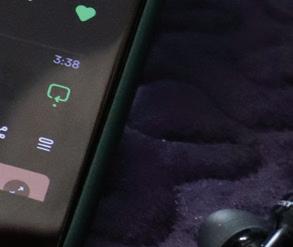
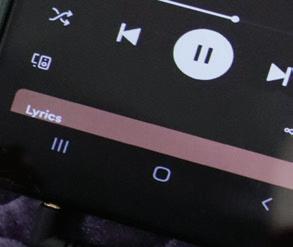


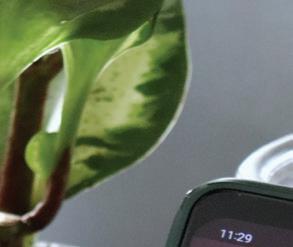
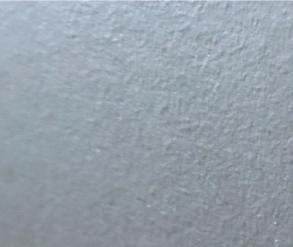
When her rise to fame began, Swift was only 16 years old and produced country music.
rough the years, she has consistently shifted between music genres and has continued to develop new styles.
It wasn’t until Swift’s fth studio album, 1989, that she switched her focus from country music and transitioned to pop.
Since then, we have seen a steady ow of pop music that I think leaves fans feeling connected, heard and understood.
I nd that Taylor Swift does well because she makes music that caters to all of her fans. I nd many of her songs relatable. Even if not all of her songs resonate with you, through all her albums there should be at least one song where a person can nd some common ground.
Most Taylor swift songs are notorious for being the dance party variety, and nothing is better than putting some Taylor Swift on and having a lighthearted, carefree dance party with your friends.
Christmas is calling! Holiday Markets in Kitchener-Waterloo
It’s November - you know what that means - on to the next festive season!
Just because the weather is getting colder and the ground will soon be lled with snow, doesn’t mean we have to go into hibernation.
Time to hear those jingle bells ring, hang those stockings, and get gift shopping; do it locally!
Kitchener-Waterloo is known for its holiday markets, so in the spirit of giving, nd out nd out which ones to visit to get in the holiday spirit.

Forbes Hall in Waterloo invites all ages to nd that perfect gift at the Very Merry Market on Nov.5. You can buy tickets online for just $5.83. You won’t want to miss this Christmas craft show featuring all things snowy and white!
Christmas Shopalooza in Cambridge will be host to 30 di erent holiday vendors on Nov. 6 from 11am-4pm.

With free entrance, you can shop for all of your holiday needs, visit Santa, and enter a contest for a chance to win a $250 shopping spree!
Who wouldn’t love an online marketplace that hosts in-person events? Forbes Hall in Waterloo is hosting an Etsy Market on Nov. 12 and 13. For a $2 admission, you can check out over 75 vendors selling various vintage items and
handmade goods. Shopping and socializing is the way to make the best memories this holiday season. On Nov. 14 from 4 pm-9 pm, bring your friends to Christmas Sip ‘N Shop in Elmira at Sip ‘N Bite Restaurant. ey’ll have vendors selling ev-
erything from sweet treats to soaps and custom charcuterie boards. By attending this event you’d be giving back to the community. Tickets cost $11.62 and all proceeds will be donated to Woolwich Community Services. e event will also be accepting non-per-
ishable food items, clothing, and toys to be donated to Woolwich Goodwill Programs. Tickets can be bought online and will include refreshments.
You can’t miss St. Jacobs Sparkles market during the holiday season! Come for the shopping
and sweets, and stay for the sparkling Christmas lights. Bring a date to the night market on Nov. 18 and 25 from 5-8 pm, or Nov. 20 and 27 from 2-5 pm.
Picture yourself under the twinkling lights, drinking hot chocolate, and listening to live music by local musicians!
e St. Jacobs daytime market is just as festive, with decorations and Santa visits on Nov. 19 and 26 from 1-4 pm.
e best gifts are made with love. e RIM Park Sportsplex is hosting a pottery sale and workshop on November 18 from 1-9 pm, 19 from 10 am-6 pm, and 20 from noon until 4 pm.
is craft market is sure to be home to the most thoughtful and unique gift for a loved one.
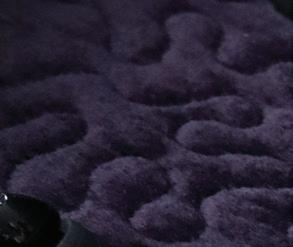

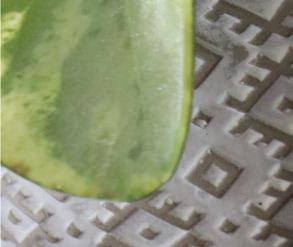
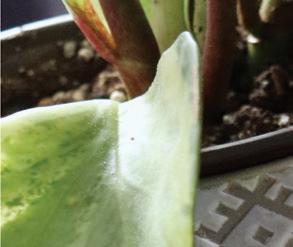



is holiday season visit the local festive markets!
It’s the perfect way to spend time with those you love, get your shopping done early, and get in the holiday spirit.
THURSDAY, NOVEMBER 3, 2022 12 • ARTS & LIFE
MUSIC
ARAFA ARTS CONTRIBUTOR
DANA
SHOPPING
SADIYA TEEPLE/CORD PHOTOGRAPHY
EMILY ANDERSON LIFESTYLE CONTRIBUTOR
KASH PATEL/MULTIMEDIA DIRECTOR
Step into fall with these stylish fall shoes
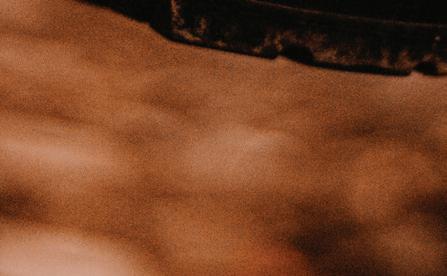
Chelsea boot starting at $169.99 in ve di erent colours.
ABIGAIL HECKHERT PRESIDENT

Similar to other people, fall is my favourite time of the year.
Along with the cooler temperatures and the warm, pretty colours, I love the change in footwear.
Boots, sneakers, runners, loafers - the list goes on.
ere are many di erent styles and types of fall shoes and I am going to break down my top ve favourites.
ese shoes are reliable, comfortable and cute for the fall/winter season.
Since some of these shoes can be pricey for a student budget, I will also provide more a ordable options that are just as stylish and durable.
If you are going to invest in some of the more expensive shoes, they should last you several years of wear (with proper care).

1. Doc Martens - Polished smooth platform Chelsea boots (starting at $280.00): ese are my go-to boots in the fall/winter season. Even though they take
MUSIC AND EVENTS
some time to break-in, once they are broken in, you will fall in love with them.
With a platform bottom, they are comfortable to walk in and keep your feet nice and warm.
Pro-tip: when breaking in Docs, wear long and thick socks and blister pads or Band-Aids on your
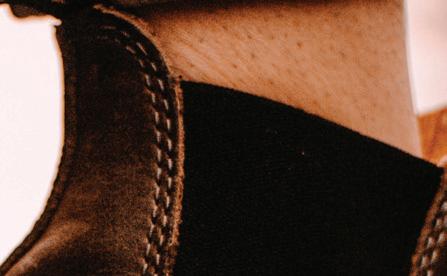
heels.
Call it Spring o ers their a ordable Allena Chelsea boots in black, grey, and brown starting at $89.99, they last a long timare also made out of vegan leather!
2. Blundstones - Classic #585 (starting at $239.95): Blundstones are staple fall boots, they are exi-
ble, breathable and comfy.
ese boots are much easier to break-in, but I would still recommend layering with a pair of thick socks.
Blundstones are made to last upwards of ten years if you take care of them properly. Softmoc has a more a ordable option, their Kylie
3. Converse - Chuck Taylor All Star High Top (starting at $75.00): Converse are another classic, something that can last all year (it’s risky in the Canadian cold though). High tops work well on warmer fall days and go well with every type of out t, while also being a fairly a ordable staple for all university students.
4. Loafers - Izzy Chunky Loafers (starting at $59.99): Loafers are no longer just your grandma’s shoes; these chunky loafers are a cute slip-on option. Call it Spring o ers them in black, white and bright green if you’re feeling vibrant.
ese loafers are also made with vegan leather and can be dressed up or down depending on the occasion.

Uggs - Classic Mini II Boot (starting at $175.00): Uggs mini boot made a big comeback this year in fall fashion.
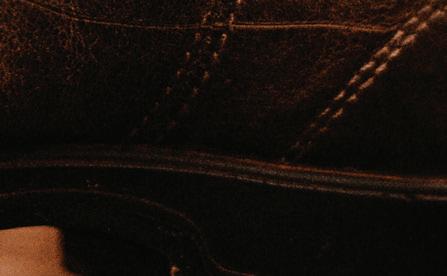
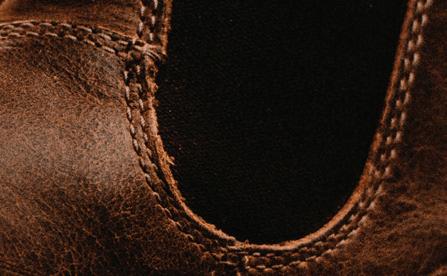
ey come in six colours and are perfect for walking around campus.
Focusing on comfort and style, Uggs are a great choice if you would like to keep warm in class this fall.
SoftMoc has their dupe Smocs 5 Mini starting at $89.99 and available in three colours.
Live music is back and it’s next-door!
even conceivable that dozen, hundreds, and thousands of people would never gather in a room again to share in the same musical experience.
JACKSON WELLS STATION MANAGER, RL

It’s 7:00 pm on a Tuesday night, you’ve probably rushed out of class or work and made it just in time for doors. You’re in a line wrapped around the block and it’s either way too hot or freezing cold.
Once you’ve slowly shu ed your way into the venue, you start to sweat from all the bodies squeezed together in one room.
It could be anywhere: an awkwardly organized bar, a friend of a friend’s parent’s basement or a massive stadium.

You’re standing shoulder-to-shoulder with some of your closest friends and total strangers, sweating through layers of clothes, tensing your body so you’re not jostled around too much.

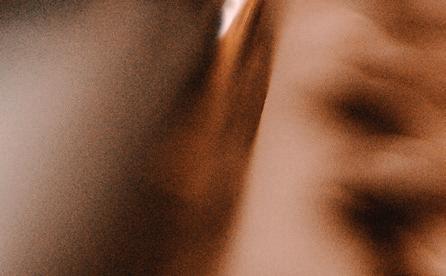

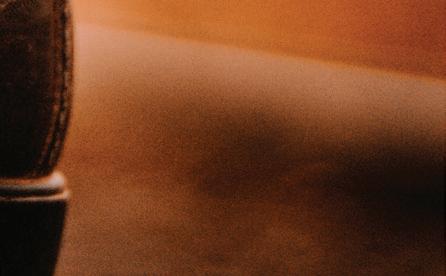


Lights go down and one of the most signi cant cultural icons in the world or your roommate’s weird friends come on the stage and perform your favourite songs or obscure covers of 70’s dad rock.
After you can race home in gridlock tra c or keep the party going for the rest of the night. Music brings people together, whether they enjoy it or not.
One of the many cultural and social losses of the COVID-19 pandemic was live music.
In the midst of massive lockdowns and public health measures, it was


During this time, artists and venues resorted to di erent methods to share their music and recoup some of their lost revenue.
Virtual concerts, merchandise sales and in some cases direct donations became the main way people interacted with venues during extended lockdowns.



With the easing of gathering restrictions, concerts have come back in a big way in 2022 but not without losses.
According to the Toronto Star, over 80 music venues closed permanently through the heights of the COVID-19 pandemic, including Waterloo’s own Starlight Social Club, not to mention the various bars and other locations that hosted many smaller and local acts.
can be a once-in-a-lifetime experience lled with spectacle and overpriced beer, but an equally valuable experience vital to the cultural makeup of a community is local music scenes.
It’s easy to love good music from major artists that are pushed to you on the radio, or through Spotify playlist algorithms, but to get to know the local bands or artists in your area is to get to know your neighbours.
class or shopping at the same grocery store as you.
Luckily, small local venues are able to bring together a community of artists and fans to have fun and know each other better.
During the months that it was impossible to hear your favourite songs belted out in a crowd full of fellow fans seemed like a distant dream.
your dreams in the near future. In the meantime, try to nd the place and people around you stuing basements and cramped bars. You may nd your next favourite band.
Sure, seeing e Weeknd or Harry Styles at Scotiabank Arena

ere’s probably an aspiring professional musician in your
Now, with major acts touring as much as possible to make up for lost time, there’s a good chance you’ll be able to see the band of
ARTS & LIFE • 13 THURSDAY, NOVEMBER 3, 2022
FASHION
CONTRIBUTED PHOTO
CONTRIBUTED PHOTO
Music brings people together, whether they enjoy it or not.
-Jackson Wells, Station Manager, Radio Laurier
at school
school and assignments on “the back burner” so that they can focus on one thing without jeporodizing the other.
YASMEEN ALMOMANI EDITOR-IN-CHIEF


Now that it’s November and the sun will soon start to set in the late afternoon, it’s o cially “seasonal depression time.”
Seasonal depression, or seasonal a ective disorder, SAD, (ironic, I know), can be de ned as a change in mood and behaviour as the seasons change into fall and winter. is change goes beyond the “winter blues” or a slight shift of sadness with the sun being gone and the world getting dark before 5 pm.
As a type of depression, SAD is categorized by the same symptoms as regular depression but will (in most cases) disappear during the spring-summer seasons.
For university students, this can be an extra tough time since you can potentially be dealing with lots of midterms or papers at the same time as the seasons change and when SAD is most common to occur.
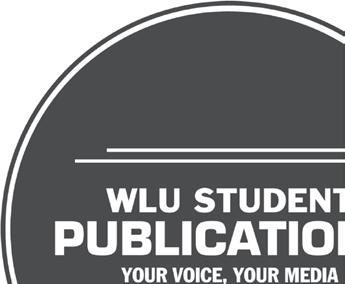
ese two stressors can possibly make a synergistic e ect during this time, making it even tougher for students to cope with their mental well-being while juggling an increasing workload. It’s easy to say that mental health is more important than studying or grades (which it is), but when you are a student, this is harder to accept, since grades are portrayed as the most important thing for your future.
Getting support for mental health is vital and the wellness centre is there to help you navigate this when you are ready.
Since there is a common notion and cycle that declining mental health -> declining grades -> declining mental health -> declining grades over and over, I want students to be able to focus on their mental health while also putting


One thing that I think helps is reaching out directly to professors to let them know what you are experiencing and how they can support you. Laurier prides itself on their care for students’ mental health, and the professors in place to educate you are re ective of that value.
If you email a professor to show them you care about your grades but also want to focus on your health, that would be the best way, in my opinion, to ensure that you do not have to sacri ce one or the other.
In most cases, a professor or TA will accommodate you by giving you more time or o ering to reweigh some submissions if you con de in them what you are managing (based on your comfort level). I
f this is not the case - you can ask someone at the wellness centre or the human rights advisory committee to advocate for you, or your academic advisor to help you plan for things academically.
If you do not feel well enough to talk to someone about grades, I don’t think there’s anything wrong with taking the agency to lower your own workload to focus on your mental health.
Myy main takeaway is that although your mind and health are much more important than numbers on a website signifying your grades, there’s nothing wrong with asking for accommodation so that you can still get the academic accomplishment you desire while supporting your wellbeing.
Voter turnout: Abyssmal and disappointing
ion, is one of indi erence.
ose who are indi erent to learning about the candidates are primarily part of the group who believe voting in elections doesn’t matter at all. Just one singular vote couldn’t possibly matter, right? Wrong.
In the city of Kitchener, preliminary results are showing that just 20% of eligible voters took the time to vote in the municipal election on October 24th. Reading this statistic shocked me.
Given the amount of information I had seen regarding the election (alongside receiving numerous pamphlets in the mail from various candidates), I had estimated that voting numbers would be high.

Clearly, I couldn’t have been more wrong. e way in which those in the community have responded to the municipal elections has astounded me.
Reactions have spanned from “this is more important than voting in the federal election” to “who are any of these people?”
e worst reaction, in my opin-
In Waterloo, new mayor Dorothy McCabe had a small 2% victory over the second place nisher. Once more, a statistic like this shows just how close a leadership race can be - every vote matters, and if more eligible voters had taken the time to come out and vote in the municipal election, who knows how the results may have di ered.
e danger of believing your vote doesn’t matter doesn’t just impact the results of the area you live in - it also sends a terrible message to those who aren’t a orded the luxury of being able to vote for their o cials. In Canada, we often forget how lucky we are to have this right - especially as we don’t even have to think rst as to whether or not we’ll be able to vote in upcoming elections. It’s just as-
sumed that we will be able to. We need to learn to take this privilege more seriously - voting continues to become more accessible with advanced polling dates and alternative methods of voting (such as by mail). Next time there is an election, I encourage you to make a “voting plan” - look up candidates, watch (and participate in) Q&A’s and educate yourself on the primary issues you are concerned about.
Lastly (and most importantly) make a game plan for voting day, or what advanced polling day you plan to attend. If worse comes to worse and you don’t make a plan in time, you can still vote at any location in the region - with a valid ID that displays your address, you can still vote. Once more, voting continues to be made easy and accessible to everyone. Exercise your right, and watch things change for the better. Your voice (and vote) are essential to creating the change you want to see. Bystanders get nowhere. Don’t become a victim of the “bystander e ect.” Be smart. Vote.
THURSDAY, NOVEMBER 3, 2022 Editorial OPINION EDITOR VACANT opinion@thecord.ca • 14
CARTOON
EDITORIAL
Note: SAD
THE CORD IS PUBLISHED BY WILFRID LAURIER UNIVERSITY STUDENT PUBLICATIONS 205 REGINA ST. N., WATERLOO WLUSP ADMINISTRATION BOARD OF DIRECTORS CHAIR Abigail Heckbert VICE-CHAIR Jacob Rice DIRECTOR Rosalind Horne DIRECTOR VACANT DIRECTOR VACANT DIRECTOR Jack Vrolyk TREASURER Kash Patel SECRETARY Grace Corriero PRESIDENT Abigail Heckbert president@wlusp.com FINANCE MANAGER Randy Moore randy@rcmbrooks. com ADVERTISING MANAGER Kurtis Rideoutads@ wlusp.com EXECUTIVE DIRECTOR Aaron Waitson ed@wlusp.com HR MANAGER Emily Waitson hr@wlusp.com
KASH
PATEL/MULTIMEDIA DIRECTOR Editors
BRONTE BEHLING MANAGING EDITOR
Capitalism’s appropriation of spirituality
NATASHA SHANTZ OPINION INTERN
From meditation apps to TikTok and Instagram in uencers giving virtual tarot card readings, spirituality has gone online.
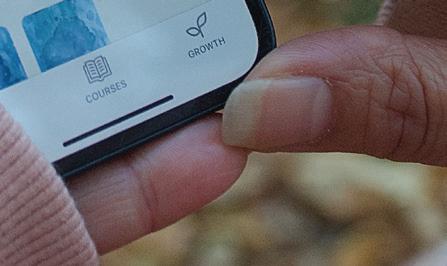




While it has become massively popular as a result, many still harbour doubts about its authenticity. While it’s worth questioning the credibility and the maintenance of traditions when it comes to the online appropriation of spirituality, I also see so much personal value in it as well.
Spiritual practice, up until recently, has historically been intimately tied to religion. e di erence between the two can be vague, but generally, spirituality is concerned with an individual pursuit of satisfaction and purpose, while religion follows a speci c set of rules and is usually institutionalized.
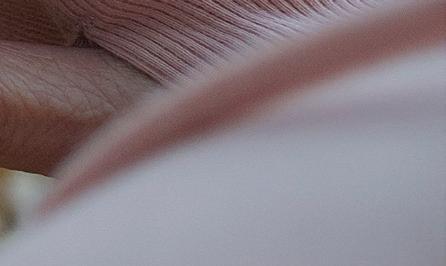

Whether it is Christianity, Islam, Buddhism or any other major or minor religious group, all religions incorporate some ideas of personal growth to reach a higher state of being. Even pagan religions, those that don’t follow the beliefs of mainstream institutional religions, still have their own traditions related to speci c forms of worship and personal connections to their concepts of the divine.
In the past couple of centuries, this correlation between religion and spirituality has begun to fade as less people identify with institutional beliefs.
With atheism rising in popular-
ity, practices like yoga or meditation that generally stem from religious traditions have become distinctly secular. So, if individuals in the 21st century feel a desire to develop their personal growth but do not have any religious a liations, they have many accessible tools online and fully within their reach.

Although the capitalist mindset of today has majorly pro ted o online forms of spirituality in this way, it nonetheless provides useful resources for many that may not have been able to reach them otherwise. I, for one, have bene ted massively from my go-to spirituality tools. Whether I’m
using online meditation apps like Insight Timer, nding yoga and pilates channels on YouTube that have allowed me to work my body and feel like I’m mentally in a good space or looking up the meanings of crystals, whether for fun or for deeper research, I have found myself through online spirituality, as much as I hate to admit it.
Many genuine spirituality gurus would likely be disappointed by my view on this topic. While I see the many bene ts of accessing spirituality online, there are also many wellness in uencers that reek super ciality and have the bare minimum of knowledge about their pursuits instead of being
credible sources.
ey often gravitate towards practices like manifestation that don’t have a lot of o cial scienti c founding or guidelines. As a result, it can be very easy for attempted spirituality in uencers to sound as if they know what they are talking about. It may be a side hobby or a particular passion for them, but that is no way of con rming their credibility on the topic.
However, there is a lot of understated e ort that goes into truly understanding practices like manifestation, a kind of e ort that is generally ignored in favour of seeing it as an easy, wishy-washy
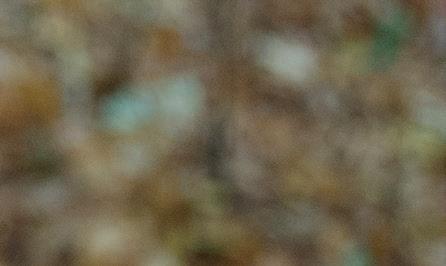
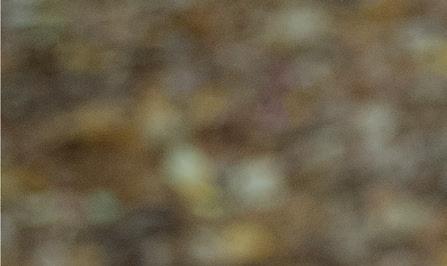



way to spew self-invented theories.
I think that while exposure to ideas about manifestation and spirituality, although they may not always initially be fully accurate, still pave the way for people to explore their own spiritual desires and grow in a deep way.
If the discovery of a sketchy in uencer eventually leads to a thorough understanding and appreciation for the genuine roots of one’s spiritual practice, I don’t see this online discovery as wholly bad whatsoever.
As for ways to support mental health struggles, accessible spirituality resources are a godsend, once again providing support to those who may not have been able to nd it previously.
Struggles like anxiety and depression do not disappear with a singular 10-minute meditation, but I know from personal experience that these tools can still help in the process of coping.



is doesn’t mean capitalism’s appropriation of spirituality is acceptable through-and-through. I could also go on and on about why capitalism pro ts unfairly o of age-old traditions.
While this is fully true, it also has to be acknowledged that on a very personal level, accessibility to spirituality through online platforms has changed my life, and I know it has done the same for many others. at’s got to stand for something.
Cruelty of hostile architecture in Waterloo
AMAN KHAN OPINION CONTRIBUTOR
e subtle cruelty of hostile architecture usually goes unnoticed. As a fellow student, I have been guilty of unintentionally turning a blind eye myself, but once I learned about the story behind these ‘trendy’ pieces of architecture, it became impossible for me to even walk to school without seeing them.
e use of hostile architecture, also known as ‘anti-homeless architecture’, is portrayed as a method of preventing crime, to discourage ‘anti-social’ behaviour, or as a ‘cool’ new architectural feature, but in reality, these features are merely a message to unhoused people that they are not welcome here.
ese features, such as third armrests or dividers that make benches or chairs so uncomfortable, are done intentionally to prevent people experiencing homelessness from being able to sleep on them.
ey are punished and scrutinized for simply existing and doing what they can to nd a place to rest. It is claimed to be a method of reducing crime, but since when is lying down or taking shade from the rain a crime?
Instead of addressing the causes of homelessness and working towards reducing it, the city is making these individuals’ lives harder than it already is.
By limiting their movement, the places they can take shelter and rest, these people are being
They are punished and scruitinized for simply existing and doing what they can to find a place to rest.
-Aman Khan, Opinion contributor
alienated from the community and made to feel as if they do not belong. It is so much more common than we might think; we see examples of it at parks uptown and at bus stops near McDonald’s.
Keep in mind, these are public areas, so there are no restrictions about who can occupy those spaces. at aspect of ‘allowing all’ does not apply to people experiencing homelessness.
ey are kicked out of their encampments and then prevented from lying down on public benches.
What options does this leave them with, as they navigate keeping themselves adjusted to the elements? It seems that society just likes to cover up instances
of ‘visible poverty’ by preventing unhoused people from resting in a public area on public property.
It is completely inhumane to treat people this way - especially people who are trying to survive and have a better quality of life.
Society’s ignorance of the barriers created by hostile architecture
contributes to the di culties these individuals endure daily.
Some might not realize what it means when a bench has a hostile feature, but others may knowingly ignore it, as they want to avoid any form of interaction with unhoused people.

ey want to limit the chances of
having any sort of ‘upsetting’ or awkward encounters.
Not everyone likes to be reminded of the privilege and luxuries they have.
15 • OPINION THURSDAY, NOVEMBER 3, 2022
MARYAM AHRARI/CORD PHOTOGRAPHY
SADIYA TEEPLE/CORD PHOTOGRAPHER
Laurier Golden Hawks Soar Above Carleton Ravens in Quarterfinal Win
NATASHA GIANNANTONIO SPORTS CONTRIBUTER
The #9 Laurier Golden Hawks hosted the unseeded Carleton Ravens in round one of the OUA football playoffs on Saturday.

Having not seen the Ravens since the 2019 season, where Laurier hosted and lost 22-10, expectations were sky high in a door-die matchup.
The Hawks scored early and their points kept multiplying as they ended Carleton’s season in a decisive 41-13 victory.
The Hawks were polar opposites from their last regular season matchup seven days prior where they fell to Queen’s 30-11, in a game where the offense could not produce.
A game Coach Michael Faulds called a “hiccup”.
Against Carleton, the Hawks could not be stopped.
Tanner Nelmes opened the scoring early inthe first quarter with a single yard run into the endzone, Dawson Hodge converting the extrapoint to put the Hawks up 7-0.
This start was one of the best all season, seeing the Hawks put up 14 points at the end of the first quarter.
Quarterback Taylor Elgersma put on a clinic, totalling 303 passing yards and two touchdown throws.
Faulds praised Elgersma post game saying, “I told Taylor pregame ... there’s a lot ofpressure on the position of quarterback ... He’s our toughest player. He’s our best leader.”
The defensive line shut down any attempts by the Ravens in the second quarter, swatting the ballmidair and forcing fumbles.
Ife Onyemenam led the team with four tackles, and Brandon Omonuwa took charge on the lone sack.
Still early in the second quarter, Elgersma and Ethan Jordan connected on a 44 yard pass right into the endzone, 21-0 Hawks.
Jordan ended the game with 93 receiving yards and one touchdown.
A couple plays later, now late in the second, Luke Brubacher forced the fumble on a Carleton drive and James Fleurissaint recovered the ball to give Laurier possession.
On the ensuing drive of 68 yards and nine plays, Elgersma found Raidan Thorne for the short touchdown pass, 28-0 Hawks.
The Ravens came out after halftime with some heat, keeping the Hawks just below half in the opening drive.
“Supernatural” Dawson Hodge responded with a successful 25 yard field goal toincrease the Hawks lead to 31-0.
Finishing off the third quarter, the Ravens stopped on theLaurier 5 yard line, and started the fourth
quarter with a six point score, but unable to convert the field goal on an offside call putting the Ravens back in throwing position where the steady Laurier defensive line shut the attempt down.
Elgersma ended his afternoon with a hand-off to Nelmes for a six yard carry resulting in anothertouchdown.
The Ravens would not go away silently, adding another touchdown with seven minutes left in the fourth, making the score 38-13.
Hodge sealed the victory with a mighty 46 yard field goal to end the game 41-13.
Four other teams were in action Saturday. Windsor visited Ottawa and Toronto visited Queen’s for their quarter final matches.

Both Windsor and Toronto would have had to pull off the upsetsfor the Hawks to secure home field in the semi finals, and delay playing against the 8-0 WesternMustangs. Toronto and Windsor would go on to lose their matches, setting the stage for Hawksversus Mustangs Nov. 5 in London.
Looking forward to that game, both teams have not seen each other since week one, where theMustangs won 34-19.
Faulds broke down the team’s anticipation saying, “We’re a better footballteam [than nine weeks ago]. I also know they’re a better football team ... We got to play ourbest.”
Senior Brandon Omonuwa said the team:
“Has to stay focused for Western” after their win, and having never beaten the Mustangs in his time at Laurier, he is looking forward to the
“head onhead, old school football, we are here for it ... we have improved throughout the year ... we area much better team from week one.”
Faulds said being on the road doesn’t faze the team.
“We are going to watch a lot of film ...they’re going to do the same so there’ll be two really well prepared football teams that are going to battle it out.”
With confidence high, both lines producing, and a goal in mind, “It’s just put your chin strap on and let’s go play football.”
Sports SPORTS EDITOR VACANT sports@thecord.ca 16 • THURSDAY, NOVEMBER 3, 2022 FOOTBALL
BRONTE BEHLING/MANAGING EDITOR

















































































































































 LIFESTYLE EDITOR CRYSTAL XUE lifestyle@thecord.ca
LIFESTYLE EDITOR CRYSTAL XUE lifestyle@thecord.ca





 JESSICA WYLES ARTS CONTRIBUTOR
JESSICA WYLES ARTS CONTRIBUTOR












 AMICHAI ABRAHAM ARTS EDITOR
AMICHAI ABRAHAM ARTS EDITOR









































































